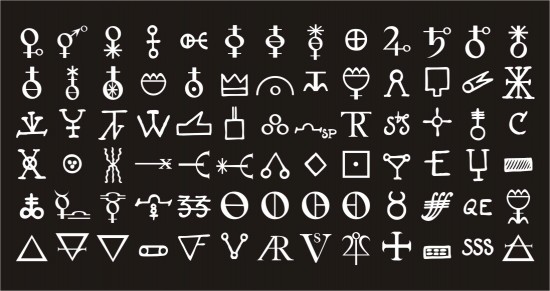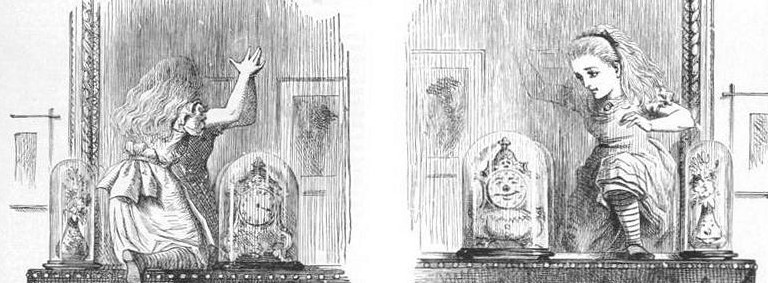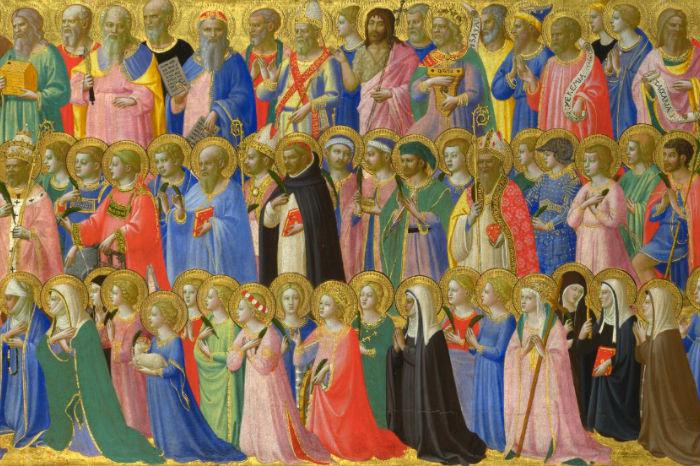The Pyrosphere contributes its energy to four of the Transitive Planes: Faerie, the Abyss, the Empyrean, and the Inferno. Faerie and the Abyss share the Lithosphere as well, grounding them in earthly realities. The Empyrean and Inferno, on the other hand, both fuel the fire of the Pyrosphere with the wind of the Aerosphere. There are both engulfing flames that reach eternally--one into the light of the Hierosphere, and the other into the void of the Necrosphere. For this reason, they are commonly called the Fire Above and the Fire Below.
Though not in opposition to each other, elementally or temperamentally speaking, they are still treated as a rival pair: The Empyrean a plane of "righteousness" as the home of the Celestials and theer Virtues; the Inferno a plane of "wickedness" as the home of the Fiends and their Vices. This is not the dichotomy of good and evil however; it is closer to Freud's pairing of the Superego and the Id--with he Material Plane as the Ego caught in between.
Both the Empyrean and the Inferno are composed of an otherworldy form of matter called aether (sometimes luminiferous aether). This is the matter through which light travels. In the Empyrean the aether in infused with light, while in the Inferno it is devoid of light. These planes have therefore also been called the Aetheric Planes: distinguished as the Empyreal Aetheric and the Infernal Aetheric. As such, they are the Ethereal Planes of Monvesia, bound in part by the solar dominion of Helyon.
Musing about tabletop gaming. In particular, about tabletop RPGs--the various editions [and clones] of "the world's most popular, fantasy role-playing game;" Palladium's "Megaversal" system; Battletech & Mechwarrior; d20 Star Wars; FATE; as well as home-brew settings and game systems.
Wednesday, August 29, 2018
Sunday, August 26, 2018
Miscellaneous House Rules (5e D&D)
No rules set an perfectly appease all players. When it comes to Dungeons & Dragons, this isn't a problem. House rules have been a part of the game since the beginning; dungeon masters were encouraged to customize the rules to their needs. These rule sets, after all, are guidelines for play--the experience of the game trumps the mechanics.
Below are a few house rules for games that I run:
Below are a few house rules for games that I run:
Initiative
Initiative is not only the ability to react, but also the ability to perceive one's surroundings and judge the best course of action. Therefore, an initiative roll should incorporate Wisdom in addition to Dexterity. A simple Dexterity check, though an easy mechanic, does not suffice; though adding a new mechanic would be too bulky. I prefer to modify the core mechanic as follows:
Friday, August 24, 2018
Virtues of Monvesia
With angels redefined as divinities, the ranks of celestial creatures have been diminished. What remains from the core rules has been augmented with sphinxes and a horned serpent in order to fill the Empyrean with majestic beings of law and goodness. The greatest of these beings are the Virtues--most of which embody two or more celestial creatures.
The Virtues of the Empyrean are companions to the Vices of the Inferno. Though goodness (Altruism) and chaos (Vitalism) are not necessarily at odds, these two groups represent represent opposing ideals. Indeed, not even their Transitive Planes are in opposition; in fact, both planes share influence from the Aerosphere and the Pyrosphere. For this reason, the planes are sometimes called the Fire Above (Empyrean, influenced by the Hierosphere) and the Fire Below (Inferno, influences by the Necrosphere).

The Virtues of the Empyrean are companions to the Vices of the Inferno. Though goodness (Altruism) and chaos (Vitalism) are not necessarily at odds, these two groups represent represent opposing ideals. Indeed, not even their Transitive Planes are in opposition; in fact, both planes share influence from the Aerosphere and the Pyrosphere. For this reason, the planes are sometimes called the Fire Above (Empyrean, influenced by the Hierosphere) and the Fire Below (Inferno, influences by the Necrosphere).

Thursday, August 23, 2018
Classifying Monvesian Creatures: Anachronisms, Doubles, Thoughtforms
Three new creature types were created for Monvesia in order to associate one creature type with each transitive plane as its daemon. While several creatures were reclassified into these types, several more still need to be created. In this post I will review the various creatures that can and will fill the ranks of these types.


NOTE: Three races from the Eberron campaign setting could find their way into Monvesia through these creature types: Warforged as mortal modrons or inevitables; changeings as doppleganger descendants; or even kalishtar as embodied thoughtforms.
Wednesday, August 22, 2018
Planes of Monvesia: Endless Companions
The world of Monvesia recognizes several more transitive planes than most other D&D worlds. Two of these have no counterparts at all among the traditional planes of 5th Edition: Infinity (including "Per Speculum", the Mirror Plane) and Eternity (the Temporal Plane). While analogs for each had existed in earlier editions of the game, they were treated as minor, variant planes.
In the setting of Monvesia, these two planes also form a "companionship"--a trait common to the Transitive Planes. These two planes share in common connections to the Lithosphere, the Hydrosphere, and the lunar dominion of Sylane. They are functional, practical planes that affect the structure of the Material Plane and how mortals interact with it.
In the setting of Monvesia, these two planes also form a "companionship"--a trait common to the Transitive Planes. These two planes share in common connections to the Lithosphere, the Hydrosphere, and the lunar dominion of Sylane. They are functional, practical planes that affect the structure of the Material Plane and how mortals interact with it.

Functional Orbs
The far reaches of the transitive planes contain gateways of energy that act as gateways to the worlds beyond. On the functional planes, these take the form of colored, pearlescent orbs, 1d6 x 10 feet in diameter. These gateways can be identified by color:
- White, Hierosphere (elemental plane of light) [Reflection]
- Purple, Orbimond (material plane)
- Bright Yellow, Hesperia [Reflection]
- Gold, Lithosphere (elemental plane of earth)
- Brown, Stygia [Eternity]
- Olive, Utopia
- Lime Green, Arcadia [Reflection]
- Green, Hydrosphere (elemental plane of water)
- Forest Green, Tartarus [Eternity]
- Black, Necrosphere (elemental plane of void) [Eternity]
Labels:
5th edition,
anachronisms,
doubles,
legacies,
Monvesia
Tuesday, August 21, 2018
Monvesian Culture: Calendars
Dozens of peoples call the lands of Monvesia home. Each has its own customs and taditions, and many diverge from a common history. Among these cultures, three calendars have become dominant: one perpetuated by human advancement; one consolidated from divergent, native customs; and one that tracks only the simplest recurring events.
For followers of the philosophical temperaments, regardless of denomination, the seasons hold spiritual significance, as each is associated with a particular element and temperament. The seasons, including the feast day which precedes them, are treated as a Zodiac of sorts: The season one is born in has an influence on your personal and interpersonal development.
Senarian Calendar
The common calendar of Monvesia is divided into six seasons of 60 days each, each of which is preceded by an extracalery festival related to one of the philosophical temperaments—for a total of 366 days. While each philosophical priesthood counts its own high holy day as the beginning of the liturgucal year, it is the Feast of Spiritual Thought that is most commonly used as the secular new year.For followers of the philosophical temperaments, regardless of denomination, the seasons hold spiritual significance, as each is associated with a particular element and temperament. The seasons, including the feast day which precedes them, are treated as a Zodiac of sorts: The season one is born in has an influence on your personal and interpersonal development.
Monday, August 20, 2018
Classifying Monvesian Creatures: Divinities
I introduced the idea of divininties as part of "Planar Inhabitants of Monvesia," and later included similar information in "Classifying Monvesian Creatures." Here, I will collect all the information about this new creature type and further explore their hierarchies.

Divinities are powerful creatures native to the Dominions. They include monsters once classified as Celestials and Fiends (particularly Angels, Demons, and Devils--now all considered Angels), as well as two new creatures: Aeons and Saints. While arch-daemons and genie nobles are unique among their types for their ability to help mortals ascend to immortality, any divinity may do so--including recently ascended saints.

Divinities are powerful creatures native to the Dominions. They include monsters once classified as Celestials and Fiends (particularly Angels, Demons, and Devils--now all considered Angels), as well as two new creatures: Aeons and Saints. While arch-daemons and genie nobles are unique among their types for their ability to help mortals ascend to immortality, any divinity may do so--including recently ascended saints.
Labels:
3.x,
5th edition,
aeons,
angels,
BECMI,
demons,
devils,
divinities,
Monvesia,
nephilim,
RC,
saints
Tuesday, August 14, 2018
Vices of Monvesia
A fiend is a being of chaos, just as a celestial is a being of light, and a fey is a being of the natural order. They inhabit the Inferno, also known as the Plane of Passion or the Plane of Will. Vices are the rulers of the fiends. They represent the base passions by which choices are made; they are the embodiment of why mortals choose to do things.
Vices are the equivalent of demon and devil Lords of other settings; and it is they who make pacts with warlocks as fiendish patrons. There are two factions of their kind in the Inferno: Physical Vices and Spiritual Vices. Fundamentally, there is no difference between the two classes beyond their methods and desired end results. This divide also affects the fiends of Inferno as well, forming hyper-competitive factions that seek to manipulate mankind.

Vices are the equivalent of demon and devil Lords of other settings; and it is they who make pacts with warlocks as fiendish patrons. There are two factions of their kind in the Inferno: Physical Vices and Spiritual Vices. Fundamentally, there is no difference between the two classes beyond their methods and desired end results. This divide also affects the fiends of Inferno as well, forming hyper-competitive factions that seek to manipulate mankind.

Monday, August 13, 2018
Classifying Monvesian Creatures: Aberrations, Celestials, Fiends
Several sets of aberrations (beholder-kin, mind flayers), celestials (angels), and fiends (demons, devils, yugoloths) have been either reclassified or denied in the Monvesia campaign setting. This renders the question: What remains of each of these types? Which aberrations are the daemons of Limbo? Which celestials are the daemons of the Empyrean? Which fiends are the daemons of the Inferno? The remaining creatures, and how they interact with each other, are explored below.

In the lists that follow, the following source abbreviations are used:
- {GGR} for the Guildmaster's Guide to Ravnica
- {MTF} for Mordenkainen's Tome of Foes
- {VGM} for Volo's Guide to Monsters
- {PSA} for Plane Shift: Amonkhet
New creatures are listed in italics. All others listed creatures are from the Monster Manual unless a link is provided.

Aberrations
The remaining aberrations can be divided into seven rough "types" based on physical appearance. These seven types can then be associated with the seven HMDJVNW.
Sunday, August 12, 2018
Planes of Monvesia: Dominions, Part 1
RETCON NOTE: This posts supersedes portions of "Planes of Monvesia: The Six Spheres" and "Planar Inhabitants of Monvesia."The "outer planes" of Monvesian cosmology are finite, independent demi-planes that exist within one of the other planes created by the overlapping of the Spheres. This is similar to the way that the Abyss and Astral Domains exist within the plans of 4th Edition cosmology. These planes are called Dominions. Two sets of these planes will be explored here: the Thrones and the Powers. Collectively, these are the Greater Dominions

Thrones
At the hear of each Sphere, a vast city can be found, housing the aeon of that Sphere. The city sxits simultaneously in that Sphere's Elemental Plane as well as each adjacent Cosmic March. It is from these aeons that the angels originate, and it is through the angels that that will of the aeon is communicated and/or enacted. While the aeons are the supreme governors of the Spheres, dominion over individual planes is exercised by the most powerful inhabitants of those planes.
There are six Thrones, one for each Sphere. Each is inhabited by that that Sphere's aeon and a majority of its saints. Some archsaints may have dominions of their own elsewhere.
Friday, August 3, 2018
Planes of Monvesia: Cosmology
RETCON NOTE: This post replaces both the majority of "Planes of Monvesia: The Six Spheres" and portions of "Planar Inhabitants of Monvesia"The planar cosmology of Monvesia is not as complex as traditional D&D campaign settings. In this setting, six Spheres form the basis of known cosmology. The two-dimensional model of the Spheres as presented by the Universal Orders in Communion with Dray is inaccurate. The Spheres should be considered in three-dimensional space, overlapping each other so that they connect at a single point. This is the basic cosmological structure of the Monvevian campaign setting.
Each Sphere is a meta-plane encompassing smaller planes They are the fundamental energies of the cosmos, embodying the six Temperaments and their associated Elemental forces:
- Hierosphere, or Altruist Sphere
- Necrosphere, or Nihilist Sphere
- Aerosphere, or Idealist Sphere
- Lithosphere, or Materialist Sphere
- Pyrosphere, or Vitalist Sphere
- Hydrosphere, or Dynamist Sphere
Orbimond, the Material Plane
Plane of Six SpheresThe [Prime] Material Plane (or Mortal World/Realms) exists at the point where all six Spheres meet. It is the only point in the cosmos where opposing Spheres come in contact. Many mages and philosophers have suggested that it is this contact of opposing forces that has made life possible. The other planes radiate out from this point, affected by the interactions of the Spheres.
In is called Orvemondt in the Honderreicher language, and Orbemonde in the Cuorrian language.
Artificers, Bards, Druids, and Rangers all draw their energy from the Material Plane. The inhabitants of this plane are collectively called mortals--including beasts, dragons, humanoids, and monstrosities.
Subscribe to:
Comments (Atom)
